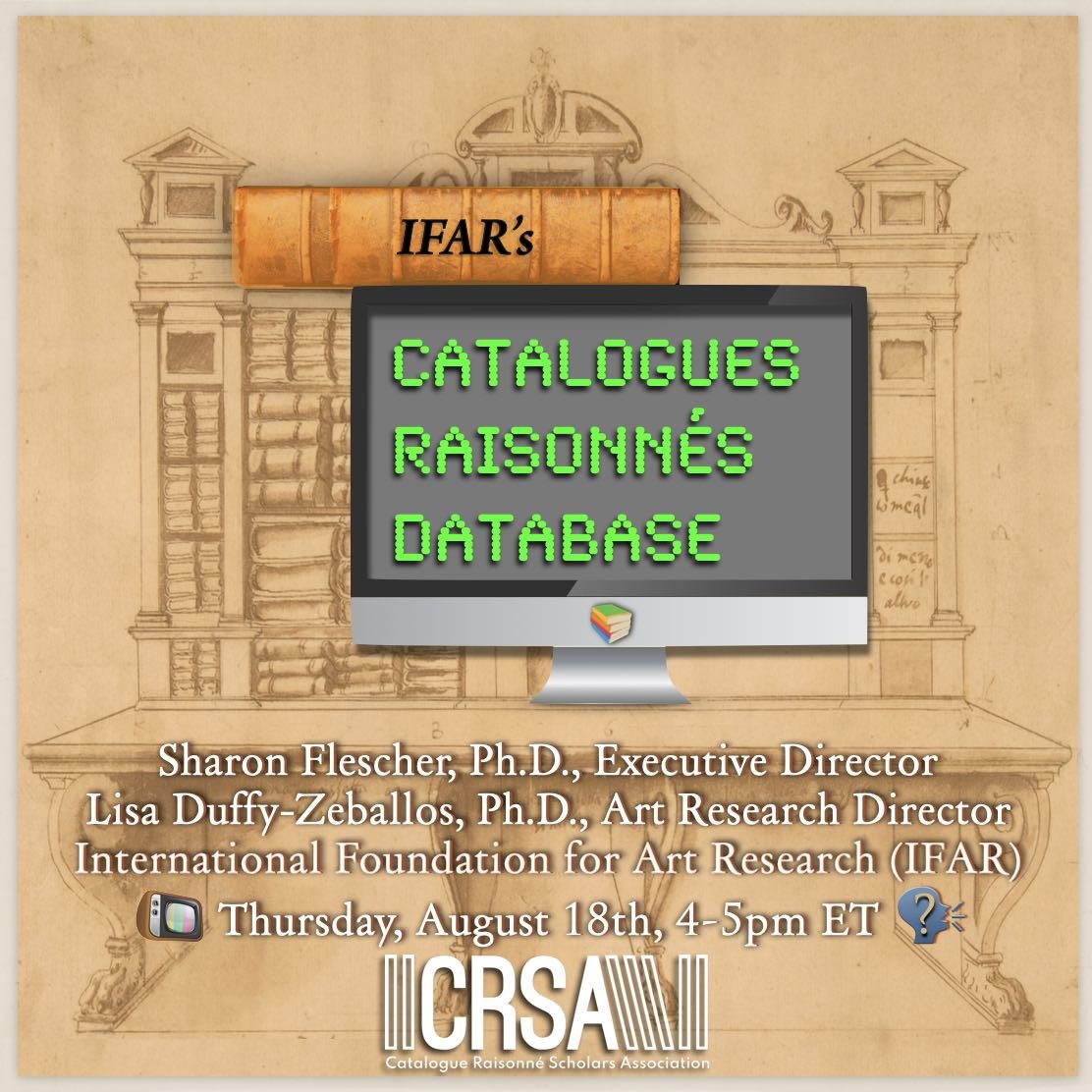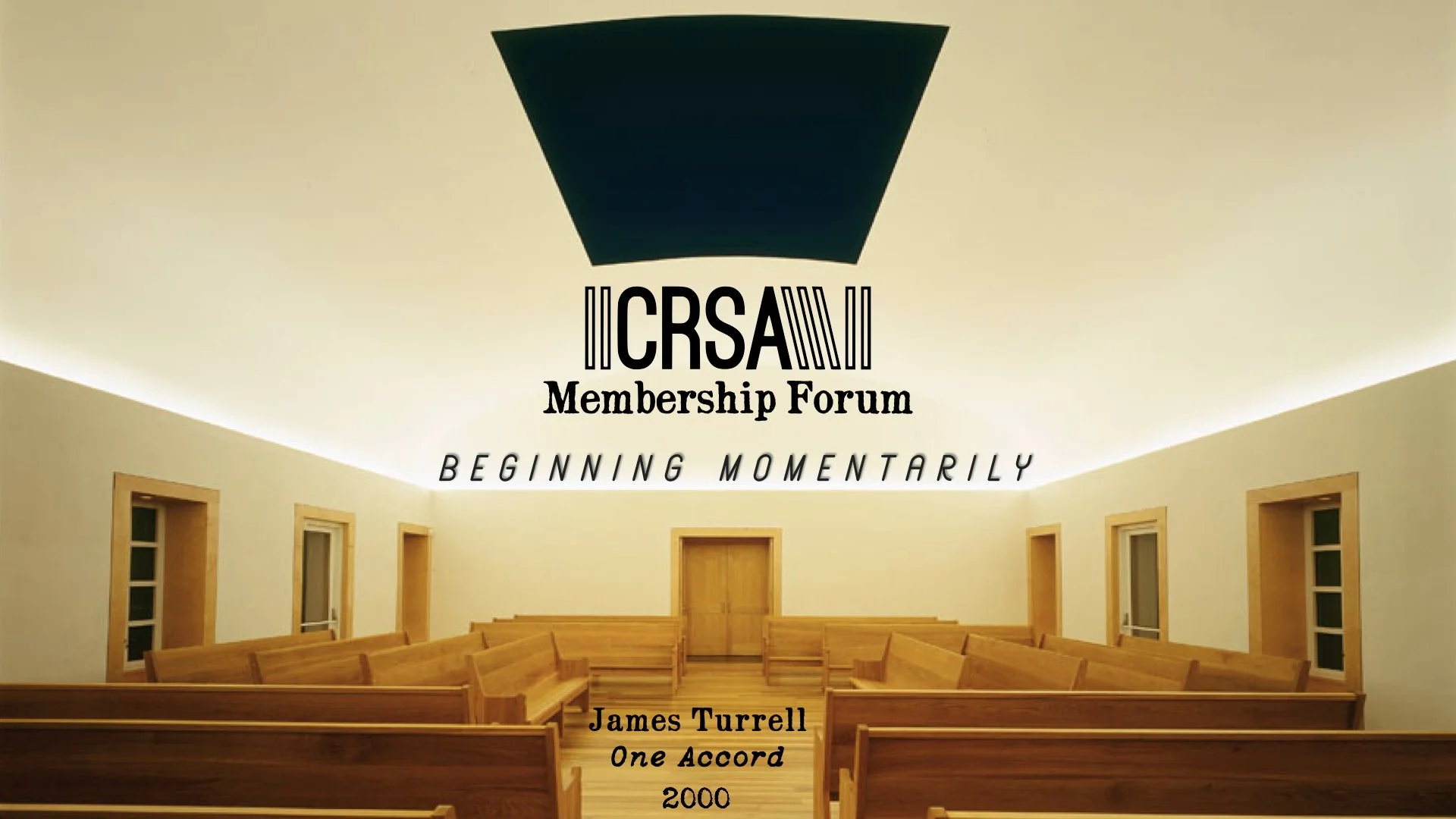“I guess what I’m asking is this: are these the only kind of questions that art historians should be asking: Whodunnit? Or whatisit? Is there nothing else we can say?”
—Michael Ann Holly
From the proposition that the ontological basis of art history remains a ground for discovery, this session seeks perspectives on the relationships between the objects and subjects of study within the discipline. How can the single artist catalogue raisonné— perhaps the ultimate expression of subject and object specificity—be recontextualized as part of a speculative art history? Through all of the genealogies within art historiography, what are the conditions of possibility for an art history oriented toward the art object? What other ontologically dichotomous or even non-dichotomous art histories are possible?
Chair: Carl Schmitz, CRSA Director of Communications and Publications
Presentations:
Exit the Artist (Again)? Enter the Artwork: On Object-Based Art History
Dan Karlholm, Department of Culture and Learning, Södertörn University, Sweden
Despite numerous theoretical efforts during two centuries to conduct art history based on something else than the subject, academic art history as we know it is basically artist history. Although Hegel’s presumption to read artistic monuments as so many materializations of Spirit was largely rejected in the nineteenth century, the dominating perception of early art history was still that art documented the inner aspirations of a people, a nation or a disembodied will. Artists were seen as mediators rather than the creators of art. Even Wölfflin envisioned a pure morphology of art, a record of shifting sense perception, almost like a slowly projected film on art’s formal developments. While it was only a through-away remark, he did envision, in 1915, “an art history without names”. Such a project was not only left unrealized, it probably appeared unrealistic and odd at the time. Regardless of the theory referred to here, art history was already, in practice, deeply invested in establishing the output of the most eminent artists, in Vasari’s phrase. During the twentieth century, a matrix of national schools and international styles was used to compartmentalize the achievements of an increasing number of great names. Contemporary art history in our time is more preoccupied than ever with canonical art stars. To think of an alternative is hard, and most welcome. The problem with object-based art history, however, is that it is subject-based. In so far as this is a label for museum-based efforts to determine authorship and authenticity, via art conservation and technical art history, the most distinctive discursive format of which is the catalogue raisonné, we have a subject first, and objects or works second. The tradition aiming to “research a single artist’s body of work to establish a reliable list of authentic works, their chronology, and history” is certainly important for documentation, archiving and musealization, thus also a basis for the nomocentric art market, but what could a different kind of object-oriented account entail? An object-based art history “without names”, centered around the body of the object, the literal corpus of the work? What would a catalogue raisonné of the work encompass, and accomplish? That is: to establish the work’s intrinsic change (aging, relative deterioration countered by restoration) as well as extrinsic connections (literally through collecting and exhibition, figuratively through reception and representation); to index the properties of the work (material and conceptual) along with its capacities (to affect, reflect, symbolize, dramatize, perform, etc.); to consider the work’s history and proverbial life as ongoing and potentially never-ending, instead of viewing its history as the record of its past. Only at the operation table is an artwork reduced to an object or mere thing. Outside of such a state of exception, artworks are better seen as assemblages or singular multiplicities, between various ingredients and materials, between a material composite and a conception of art, but also in the sense that the work, as (once) worked but (still) working, is able to produce inexhaustible effects and attachments. To paraphrase W.J.T. Mitchell: what does the artwork want? To be collected as the legitimate infant of a parent, or to have a life, adventurous at best, tedious at worst, but fundamentally perpetual? To be listed as an inventory or the element of an obituary, or to be acknowledged as an individual able to make a difference in the world?
The Art Group Zvono: A Catalogue Raisonné of Institutional Critique
Sandra Bradvic, University of Bern
My PhD project “Self-organization and Institution. Historiography of Curatorial Practice in Bosnia-Herzegovina 1982-2011“ is based on four case studies of artistic and curatorial collectives from Bosnia-Herzegovina (BIH). The goal is to comprehensively not only analyze in depth these key positions, but to also – most importantly – critically examine their potential and eventual contribution within the current international curatorial discourse about new possible structural and organizational models for a contemporary art institution. By choosing to treat curatorial practice as the “object” of the art historical investigation, the focus of my examination is put on the exhibition as a complex structure of relations between different participants – such as curators, artists, institutions, cultural policy, funding instances a.o., – rather than on the singular art work, adhered to a western-modern, object oriented perspective, applied by many authors of art historical contributions about eastern European art, which so have repeated the method of canonization, simply from the eastern European perspective. My examination, instead, dispenses with an ascription of the investigated examples to either Eastern or Western art history, treating them instead as a specific type of curatorial practice to be analyzed in specific geographical boundaries and a defined time frame and–exactly as such–being internationally comparable.
A Biography of the Ionides Collection: Public and Private Transformations
Helen Glaister, Victoria and Albert Museum
A biographical approach to the study of individual or groups of art objects has increasingly gained favour in recent years, building on the formative work of Appadurai and Kopytoff (1986) as a means of teasing multiple meanings from objects traditionally categorised as ethnographic. Anthropologist Alfred Gell and later scholars emphasised the agency of objects in motion and the application of these methodologies can be usefully applied to art objects in order to illuminate the variety of ways in which they have been classified, interpreted and understood in multiple and diverse spatial and temporal contexts.
Taking the Ionides Collection of Chinese Export Porcelain as its subject, now in the national British collections at the V&A and British Museum, this short paper will consider the transformations which occurred in the life of the collection as objects passed from the private to the public sphere, the impact of methods of display and interpretation and the relationship between subject and object, from the private residence of the collector to the public gallery and national museum. Once at the national museum, this paper will consider the impact of classificatory boundaries which defined the manner in which individual objects were situated within established museum taxonomies, highlighting the impact of museum specialists and institutional priorities and the shifting status of this category of specialist ceramics. As a result, objects were inserted into multiple museum narratives, from the history of Chinese art, the ceramic history of China and global ceramic history where they continue to play a significant role.
“I must be seen whole”: Seeing Manet Anew
Kathryn Kremintzer, The Art Institute of Chicago
This paper breaks from historically medium-specific divisions within museum collections and catalogue raisonnés to consider a series of object-based case studies that attest to Édouard Manet’s working methods across media in the 1860s, from painting through drawing to printmaking. Throughout the early decade of his career (1860-1867), Manet made watercolors after his own oil paintings to reproduce them in etching, a practice he repeated for several of his most accomplished and controversial canvases. These drawings helped Manet translate painted compositions onto printing matrices, affording the artist an opportunity to reimagine each iteration according to the material attributes of whichever medium. Guided by collaborative efforts in conversation with curators and conservators, this project offers new technical images and findings, particularly for often overlooked works on paper, that demonstrate how a revised account of Manet’s works could be more productively organized, according to what I call image genealogies, to consider related works across media—taking the “whole” of Manet’s production together, the way he wished to be seen, as he told Antonin Proust: “I must be seen whole.” I’ve put this methodology to practice in recent and forthcoming projects at the Art Institute of Chicago which demonstrate how object-based study can guide curatorial strategies in and beyond the galleries from installation to labels, catalogue, lectures, and online interactives.




















